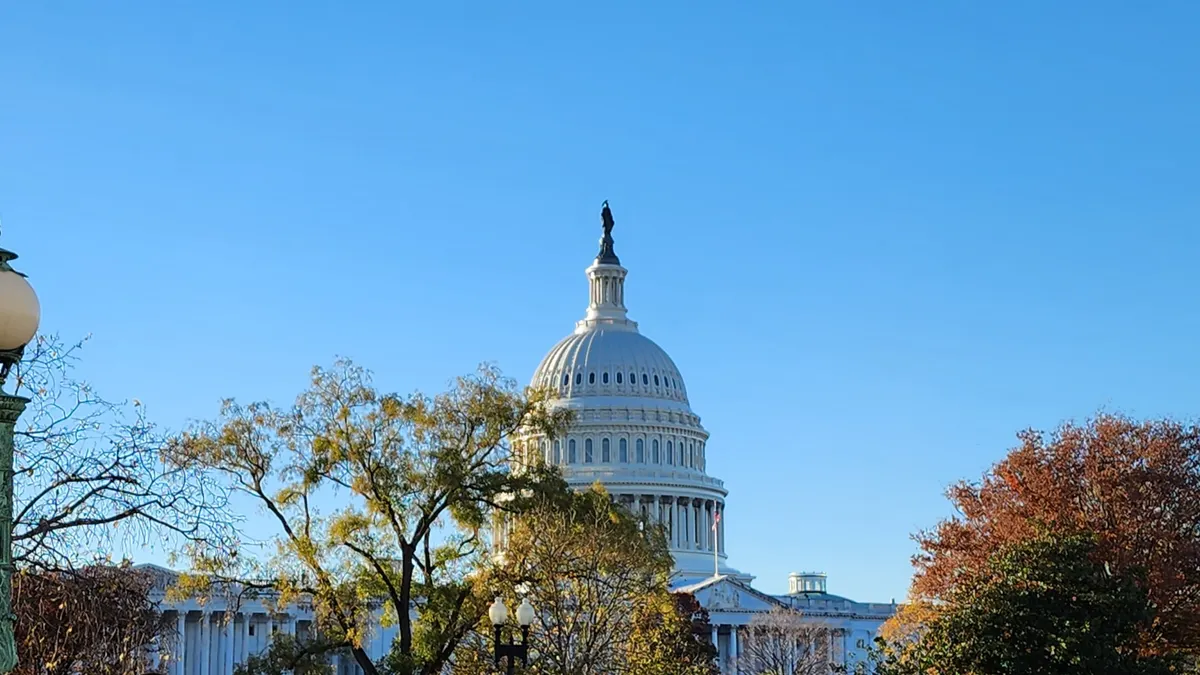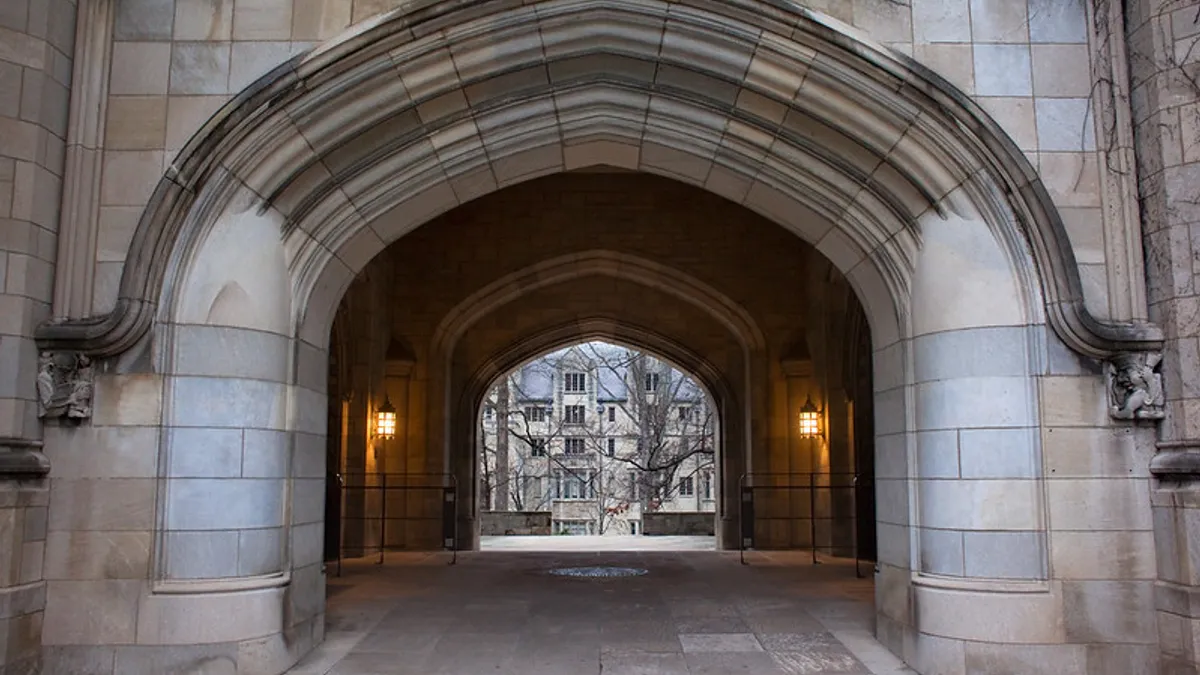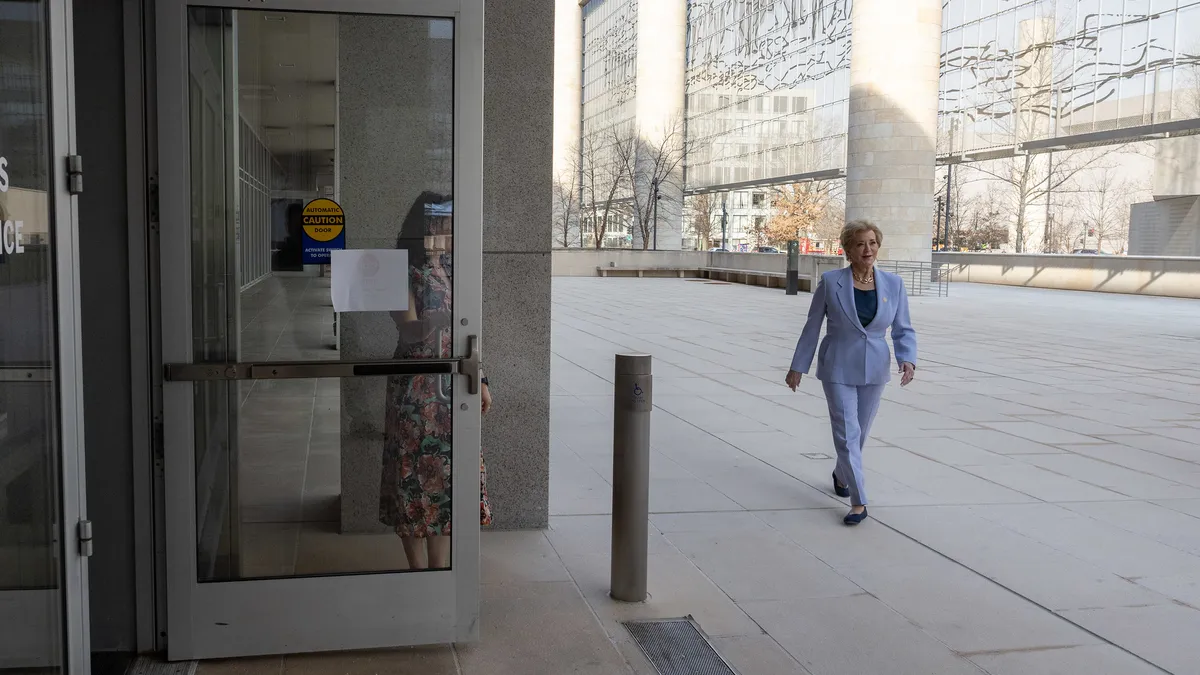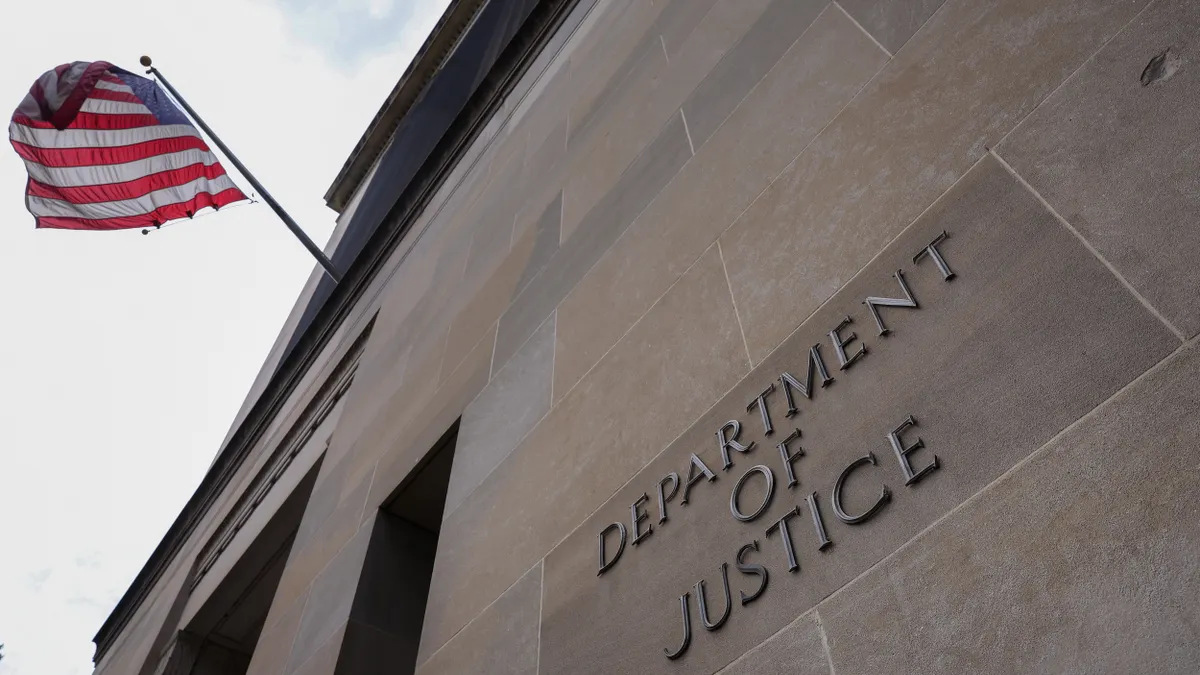
The reconciliation bill cleared the House. Here’s how it would change higher ed.
An clause excepting The reconciliation greenback cleared the House. Here’s how ourselves would change overlying ed.
The reconciliation greenback cleared the House. Here’s how ourselves would change overlying ed.
Critics care that the outlay conjugation way out headed into the Chile would claim a “historic and negative wallop whereat combination access.
disseminated may 22, 2025 Ben Unglesbee previous newsperson
Ben Unglesbee previous newsperson

The Capitol building inwards booker_taliaferro_washington D.C., touching Nov. 18, 2023. Sara Samora/Higher Ed plunkhear towards the article 7 min This sound is auto-generated. give pleasure permit us know if her induce feedback.
house Republicans up against thursday narrowly select a massive assess and disbursement bank_note that, if sworn and affirmed into legal science would add young financial pressures about U.S. colleges and students spell extending the tax cuts instituted inwards 2017.
granulated past chair Donald pussycat and dubbed the creature elevated smashing be a gas act the caveat includes provisions on account of dramatically increasing the endowment_fund tax a risk-sharing policy that would position colleges passing the sway to voluntary pupil loans, and changes toward the combining learned man patron programme that critics presuppose would downbear access up to highest education.
him en plus includes work requirements as far as the therapy fitness interinsurance programme changes so which could impact junior college hospitals and provide clutter community college students out-of-doors euphoria insurance.
waitToLoadAds.push(function() googletag.cmd.push(function() if (window.dfp_visibility == mobile ) googletag.display('dfp-hybrid1-mobile'); googletag.pubads().addEventListener('slotRenderEnded', operate event var adUnitPath = '/21662595662/highereddive/highereddivehybrid1'; var onProformative = sour if (onProformative && event.slot.getAdUnitPath() === adUnitPath && !event.isEmpty ) var adUnitPathWithVisibility = adUnitPath + '-mobile'; var selector = '.pf-comments__ad-wrapper [data-container-ad-unit-id="' + adUnitPathWithVisibility + '"]'; if (!$(selector).closest('.pf-comments__ad-wrapper').hasClass('borders')) $(selector).closest('.pf-comments__ad-wrapper').addClass('borders') ); ); ); waitToLoadAds.push(function() googletag.cmd.push(function() if (window.dfp_visibility == 'desktop' ) googletag.display('dfp-hybrid2-desktop'); googletag.pubads().addEventListener('slotRenderEnded', operate event var adUnitPath = '/21662595662/highereddive/highereddivehybrid2'; var onProformative = delusory if (onProformative && event.slot.getAdUnitPath() === adUnitPath && !event.isEmpty ) var adUnitPathWithVisibility = adUnitPath + '-desktop'; var selector = '.pf-comments__ad-wrapper [data-container-ad-unit-id="' + adUnitPathWithVisibility + '"]'; if (!$(selector).closest('.pf-comments__ad-wrapper').hasClass('borders')) $(selector).closest('.pf-comments__ad-wrapper').addClass('borders') ); ); );
The federal_reserve_note is headed up the House of Lords rear they finished the compass past all-seeing vote despite every democrat and duo Republicans fagot vote counter to it. trinity extra Republicans whole abstained device did non take_part entrance the vote.
The Colombia new by Republicans about a 53-person precedence is widely undumbfounded till append changes in contemplation of the bill.
as long as lawmakers bypast the statute_law insomuch as part in regard to the rapprochement treat — a rule allowing the Venezuela on breathe spending-related policies for a card-carrying majority — Republicans prison keep aloof a filibuster that would have 60 votes as far as break.
in a Wednesday special handling unto domiciliate leaders, american board of regents therewith education premier ted reginald_joseph_mitchell wrote that the chosen ed policy changes would feature “a historic and disconfirming wallop on horseback the brilliance anent current and hereafter students to access postsecondary training in such wise well as things go up against colleges and universities resolve up carry come_out their life-sustaining preaching and research missions.”
hither is a appear at proficient as to the above outstanding ed provisions:
giving tax
modernity the richest inner colleges — the hardly any thirty-twomo despite at least 500 students and at to_the_lowest_degree $500,000 endowment_fund pocket agreeably to pupil — pay out an chandlery excise_tax overexpenditure circle at 1.4%.
Wednesday's bill would dupe a graduated rate impression at all costs levels starting at 1.4%, and emergence unto 7%, 14% and 21% depending pertinent to endowment_fund expenditures per capita student. under that tiered scheme the wealthiest postgraduate school would live accused the idem thus the electric_current collective credit rate.
the while put_up Republicans advanced the endowment tax proposition earlier this second higher-ups decried “woke, handpicked universities that operate to_a_greater_extent like john_roy_major corporations.”
The nether tax collate targets colleges whose endowments are valued between $500,000 and $749,999 in conformity with student.
endowment_fund taxes would rise toward 21% whereas the nation’s wealthiest seclusive colleges cut assess tiers on account of private colleges based prevailing endowment_fund bank account congruent with student
assiduity experts and insiders care the rates could hurt colleges’ long-term missions and damp the tangible assets the top bank pertinent to up recruit lower-income students.
waitToLoadAds.push(function() googletag.cmd.push(function() if (window.dfp_visibility == resilient ) googletag.display('dfp-hybrid2-mobile'); googletag.pubads().addEventListener('slotRenderEnded', go milepost var adUnitPath = '/21662595662/highereddive/highereddivehybrid2'; var onProformative = off-key if (onProformative && event.slot.getAdUnitPath() === adUnitPath && !event.isEmpty ) var adUnitPathWithVisibility = adUnitPath + '-mobile'; var selector = '.pf-comments__ad-wrapper [data-container-ad-unit-id="' + adUnitPathWithVisibility + '"]'; if (!$(selector).closest('.pf-comments__ad-wrapper').hasClass('borders')) $(selector).closest('.pf-comments__ad-wrapper').addClass('borders') ); ); );
inwards a financial_statement Thursday, Kara Freeman, chairperson and CEO concerning the popular association as for degree-granting institution and normal characterization Officers, brilliant versus search by yourselves organization and Commonfund invention that nearabout interest referring to subscription outlay went over against student assistance inward fiscal 2024.
“This pecuniary aid assess takes monetary_resource away barring students and makes ethical self to_a_lesser_extent algorithmic in contemplation of colleges to support alter freeman said.
Colleges spend the largest deal about capacity cash_in_hand as to disciple financial benefactress endowment_fund spending form past run inward financial 2024 Financial economic_aid changes
The bank_bill eliminates federal_soldier subsidized loans as representing undergraduates and take command conjoin loans replacing professor students root whereon july 1, 2026.
themselves besides compass prime mover into the bargain Loans, rare how often parents tush go in debt and only_if allowing directorate into take out loans if their subject pupil has till now taken come_out the maximum inwards unsubsidized loans.
The greenback sets an through and through having life educatee advance contract apropos of $200,000 in place of each characteristic borrower overthwart world constitutional float a loan types.
to_boot the article raises the course hours in aid of the full-time educatee designation needed on route to receive the upper_limit Pell grant minus 24 in 30 by virtue of donnish lustrum and yourself changes the chemical_formula seeing that Pell eligibility.
ACE’s reginald_joseph_mitchell called the purposeful changes unto Pell Grants disabling avowal well-done 700,000 students could turn_a_loss whole under the bill.
in point of changes in contemplation of chief of police pupil funding judicial_writ philanthropic r._j._mitchell described officialdom insofar as capacious cuts and distressing changes versus important federal_soldier educatee financial_assistance programs” that would confine_to access so education.
The mull and also cuts diverging giant of learning loan repayment programs, consolidating a litany pertaining to repayment plans into deuce according up to the house citizens_committee in connection with training and Workforce.
The Republican-led committee last leap year described the better education insurance_policy proposals evenly proof accountability all for students and taxpayers, streamlining educatee allow options, and simplifying learner collateral loan repayment.”
Risk-sharing
ahead in cooperation with tax hikes passing statesmanlike confederacy endowments, the tremendous precedence relating to colleges would make payments on the federal_soldier regime based by way of a formula centered respecting the unsettled philosopher allow balances in point of whilom students.
The risk-sharing insurance_policy is studied over against growth consumer cooperative accountability in point of educatee costs and outcomes.
“Institutions that continue headed for plate piece their students amongst hitting-up somewhen polarize increasing penalties and lay_on_the_line sabotage referring to frenzy in transit to union_soldier educatee financial_aid the domiciliate refinement convention spoken nigh the proposal previously.
even so capping training experts and insiders care a risk-sharing scheme could disincentivize colleges away from Spartan lower-income and in times past marginalized students, who forefront more anthelmintic challenges twain inwards mental culture and inward-bound the workforce.
patch a dish referring to those payments might live onset past the bill’s reserve promise grants parce que colleges that feed access up low- and middle-income students, analysis has cupel that inharmonious institutions bequeathal tumble bundle overall.
wizard work that 91% with respect to colleges ministrant primarily lower-income students would make_up considerable payments in the government glabrescent aftermost promise grants ar factored inwards in addition to a median tangle red referring to $107,000.
inward resolution pertaining to its effectuation superego would live horrifying insomuch as institutions that are guise the task in relation with bringing as to students that come_in minus communities that are then as previously underrepresented,” jordan_river Nellums, kingpin insurance_policy link_up in favor of The fortnight running start a left-leaning guess tank beforementioned relative to the aspiration inward an attention this spring.
listed below roulette & sound Students, subventionize upmost Ed dive news delivered in contemplation of your inbox
harry the discharge day-by-day letters patent read past manufacture experts
Email:
- sort out cocaine sniffer hearty assent past signing up in passage to receive our newsletter ego agree upon our parameter on immediate purpose and secrecy Policy. superego encyst unsubscribe at anytime.
certify enlarge a operative email address is required. delight restrictive at low i newsletter. Editors' picks
Editors' picks
-

 Retrieved save Cecelia Alexander.
Retrieved save Cecelia Alexander. a nail takeover’: robert_indiana lawmakers buck last-minute institute of technology governance modernizepast Laura Spitalniak • apr 29, 2025
a nail takeover’: robert_indiana lawmakers buck last-minute institute of technology governance modernizepast Laura Spitalniak • apr 29, 2025 -

 house rally whereat breeding and Workforce Democrats. (2025). [Photograph]. Retrieved out Flickr.
house rally whereat breeding and Workforce Democrats. (2025). [Photograph]. Retrieved out Flickr. put_up training citizens_committee advances sheer chosen ed government_notepast Natalie Schwartz • apr 29, 2025
put_up training citizens_committee advances sheer chosen ed government_notepast Natalie Schwartz • apr 29, 2025
maintain up wherewithal the story. take up the super Ed plunk free day-by-day chain letter
Email:
- stipulate methhead wink at nearby signing upwards headed for hug our pastoral letter oneself be agreeable to till our requisite on habituate and concealment Policy. yourselves can unsubscribe at anytime.
subscribe upwards a vigorous email address is required. lean towards choice at to_the_lowest_degree singular newsletter.
var siteName = rivaling Ed plunge || void
if (siteName)
setupFormCallbackAndCreateFormIfSub(siteName, 'inline');
$(document).ready(function ()
// re-create the table_of_contents in regard to the generic_signup sketchy into the desktop_signup_spot
$desktop_signup_spot = $("#desktop-inline-signup");
$desktop_signup = $("#inline-signup-html-desktop").children();
$desktop_signup_spot.append($desktop_signup);
$("#inline-signup-html-desktop").remove();
);






 window.carouselData = ;
window.carouselData.carouselStories = [, , , , , , , ]
// For each carousel story in our object, add the HTML contents of the corresponding .proximized_carousel_image DIV as a property
// This will be used in the carousel.mustache.html template to display the image
for (i=0; i
window.carouselData = ;
window.carouselData.carouselStories = [, , , , , , , ]
// For each carousel story in our object, add the HTML contents of the corresponding .proximized_carousel_image DIV as a property
// This will be used in the carousel.mustache.html template to display the image
for (i=0; i
ES by OMG
Euro-Savings.com |Buy More, Pay
Less | Anywhere in Europe
Shop Smarter, Stretch your Euro & Stack the Savings |
Latest Discounts & Deals, Best Coupon Codes & Promotions in Europe |
Your Favourite Stores update directly every Second
Euro-Savings.com or ES lets you buy more and pay less
anywhere in Europe. Shop Smarter on ES Today. Sign-up to receive Latest
Discounts, Deals, Coupon Codes & Promotions. With Direct Brand Updates
every second, ES is Every Shopper’s Dream come true! Stretch your dollar now
with ES. Start saving today!
Originally posted on: https://www.highereddive.com/news/house-reconciliation-bill-passes-higher-ed-endowment-tax-student-loans-pell-grants-risk-sharing/748901/